
About UsThe Numismatic Bibliomania Society is a non-profit organization promoting numismatic literature. For more information please see our web site at coinbooks.org SubscriptionsThose wishing to become new E-Sylum subscribers (or wishing to Unsubscribe) can go to the following web page link MembershipThere is a membership application available on the web site Membership Application To join, print the application and return it with your check to the address printed on the application. Membership is only $15 to addresses in the U.S., $20 for First Class mail, and $25 elsewhere. For those without web access, write to: David M. Sundman, Secretary/TreasurerNumismatic Bibliomania
Society AsylumFor Asylum mailing address changes and other membership questions, contact David at this email address: dsundman@LittletonCoin.com SubmissionsTo submit items for publication in The E-Sylum, just Reply to this message, or write to the Editor at this address: whomren@coinlibrary.com
BUY THE BOOK BEFORE THE COINYou won't regret it! |
- WAYNE'S WORDS: THE E-SYLUM FEBRUARY 24, 2013
- KOLBE & FANNING 128TH MAIL-BID SALE ANNOUNCED
- NEW BOOK: A GUIDE BOOK OF U.S. COINS. 2014
- NEW BOOK: SOUTH ASIAN COINS AND PAPER MONEY – INDIAN EDITION
- BOOK REVIEW: ENCYCLOPEDIA OF U.S. SILVER DOLLARS, 1794-1804
- GERALD "JERRY" BUSS 1934 -2013
- MORE ON THE RUTH HILL WORLD BANKNOTE COLLECTION
- NOTES FROM E-SYLUM READERS: FEBRUARY 24, 2013
- ON THE FATE OF NUMISMATIC SCRAPBOOK AND WORLD COINS MAGAZINES
- MARK FERGUSON, H.O. GRANBERG, AND THE DEXTER 1804 DOLLAR
- A STETHOSCOPE MEDAL
- QUERY: POST-1793 BANK OF SOUTH CAROLINA NOTES AUCTION RECORD SOUGHT
- TANENBAUM COUNTERSTAMP COLLECTION LISTING OFFERED
- MORE WEB RESOURCES FOR NUMISMATIC RESEARCHERS
- FIRST COINVESTORS AND THE SWIATEK-BREEN COMMEMORATIVE BOOK
- THE UNITED STATES POSTAL GUIDE AND OFFICIAL ADVERTISER
- QUERY: COINAGE MAGAZINE ARTICLES ON CHINA SOUGHT
- HOW MANY COUNTRIES ARE THERE IN THE WORLD?
- A CHART OF THE VALUE OF THE U.S. CENT
- MAN OFFERS CHOICE OF $5 BILL OR SILVER DOLLAR FOR FREE
WAYNE'S WORDS: THE E-SYLUM FEBRUARY 24, 2013

New subscribers this week include Ross McKenzie, Karl Newman, Robert Stewart, and Dusty Royer. Welcome aboard! We have 1,630 email subscribers, plus 213 followers on Facebook.
This week we open with a reminder about the upcoming Kolbe & Fanning numismatic literature sale closing and information on three new numismatic books.
To learn more about Jerry Buss, Ruth Hill's banknote collection, H.O. Granberg's safe, Dr. Laennec's Window in the Breast, and Tom Sawyer's Weird Uncle Silas, read on. Have a great week, everyone!
Wayne Homren
Editor, The E-Sylum
KOLBE & FANNING 128TH MAIL-BID SALE ANNOUNCED
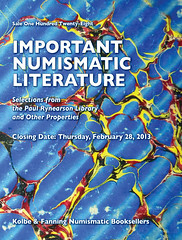 Kolbe & Fanning Numismatic Booksellers have announced their 128th mail-bid sale of important numismatic books, which will close on Thursday, February 28. Featuring selections from the Paul Rynearson library and other properties, the sale includes hundreds of standard works on ancient coins, as well as a variety of works on medieval, foreign and U.S. numismatics.
Kolbe & Fanning Numismatic Booksellers have announced their 128th mail-bid sale of important numismatic books, which will close on Thursday, February 28. Featuring selections from the Paul Rynearson library and other properties, the sale includes hundreds of standard works on ancient coins, as well as a variety of works on medieval, foreign and U.S. numismatics.
The sale is composed of 1267 lots of literature covering the entire range of numismatics. Highlights include:
—A complete set of the Forni reprint of the massive Corpus Nummorum Italicorum, the masterpiece of King Victor Emmanuel III of Italy (lot 204)
—The complete presentation editions of the Bowers & Ruddy/Merena sales of the Garrett, Norweb, Eliasberg and Brand collections, as issued in three imposing volumes, one of only 15 possible sets (lot 914)
—A plated copy of Henry Chapman’s enormous catalogue of the John Story Jenks collection, with 42 photographic plates (lot 949) —The Marquess of Milford Haven’s landmark British Naval Medals (lot 526)
—G. Kenneth Jenkins’s important The Coinage of Gela (lot 399)
—An 1871 broadside catalogue of a Bangs, Merwin & Co. coin sale (lot 889)
—An original 1875 Crosby on The Early Coins of America (lot 976)
—John Muscalus’s original manuscript of his doctoral dissertation, Early Banking Enterprises in Relation to the Development of Public Education (lot 1127).
Bids may be placed via mail, email, phone or fax. The printed catalogue has been sent to customers on the Kolbe & Fanning mailing list. A limited number of copies remain available for purchase for $15 postpaid. The catalogue also may be downloaded in PDF form from the Kolbe & Fanning website at www.numislit.com. For full bidding instructions, please see the catalogue and read the terms of sale.
For more information or to place bids, please contact David Fanning at df@numislit.com or (614) 414-0855. Thank you, and we look forward to your participation!
NEW BOOK: A GUIDE BOOK OF U.S. COINS. 2014
A formal media release for the 2014 Red Book will go out next week, but I wanted to give E-Sylum readers advance notice about some new features this year.
Of note to numismatic bibliophiles: we’ve revamped appendix B, “Collectible Red and Blue Books.” Our new layout presents the Red Book in a way that’s logical for collectors and makes sense from a market perspective. We list the classic hardcover Red Book (1947 edition to date) in its own chart, instead of combining hardcover, softcover, spiral, and other formats together in one long chart. This is convenient because the hardcover is the most popular format for collecting. The other mass-market formats (softcover; spiralbound softcover; spiralbound hardcover; Journal Edition; and Large Print Edition) are discussed under separate headings, with narrative pricing instead of charts. For example, softcovers are described like this:
Softcovers (1993–2007) The first softcover (trade paperback) Red Book was the 1993 (46th) edition. The softcover binding was offered (alongside other formats) in the 1993, 1994, 1995, and 1996 editions; again in the 1998 edition; and from 2003 through 2007. All are fairly common and easily collectible today. Values in New condition range from $2 up to $3–$4 for the earlier editions.
The leather-bound editions are cataloged in a separate chart, with notes. This includes the leather-bound 1947 Tribute Edition Red Book, and the two super-rarities of the Limited Edition series—the 2008 Numismatic Literary Guild, and the 2008 American Numismatic Society. A new feature: we list the print runs for each leather-bound edition. Did you know that the first Limited Edition (2005 cover date, issued in 2004) had a print run of 3,000, while this year’s (the 2014) is limited to only 1,000 copies?
Special Editions also get their own chart, covering collectible Red Books like the 1987 Special ANA Cover (valued at $1,400 in New condition), the 2010 Philadelphia Expo special edition, the 2011 Boston Numismatic Society special edition, and a dozen others. The most recent special edition is a version of the 2013 Red Book (printage: 250) that was distributed at the American Numismatic Society banquet last month, marking Roger Siboni’s being honored with the ANS Trustees’ Award.
“The Blue Book as a Collectible” is discussed as well, in narrative and charts giving valuations for select past editions.
A few other items of interest:
A new appendix on the $10 million record-breaker. A new appendix essay delves into “The Most Valuable U.S. Coin Sold at Auction,” with illustrated coverage of the 1794 Bust dollar that recently sold for $10 million. It also tells about the famous coin that was knocked off the world-record perch, the 1933 double eagle once owned by King Farouk of Egypt.
A listing of ANA clubs: As a service to the hobby we’ve included another new appendix that tells readers about the American Numismatic Association, and lists contact information for ANA member clubs by state. Our hope is that—given the massive number of Red Books sold yearly—this will help boost membership in the ANA. (The appendix also mentions the Royal Canadian Numismatic Association.)
The bibliography: I feel it’s a good sign for the health of the hobby that the Red Book’s four-page bibliography includes 25 standard references published within the past five years, six of which are from 2012.
NEW BOOK: SOUTH ASIAN COINS AND PAPER MONEY – INDIAN EDITION
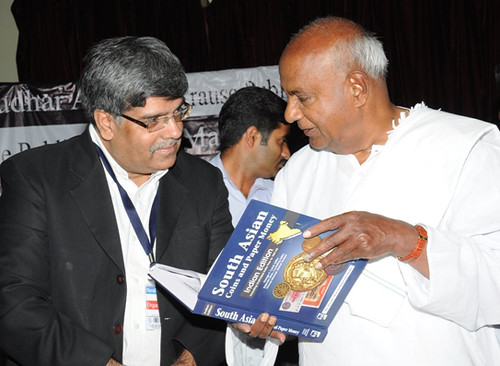
Rajender Maru with the former Prime Minister H. D. Deva Gowda of India graced the event by re-launching the South Asian Coins and Paper Money – Indian Edition book.
 South Asian Coins and Paper Money, Indian Edition (including undivided India prior to 1947).
ISBN 9781440236617
South Asian Coins and Paper Money, Indian Edition (including undivided India prior to 1947).
ISBN 9781440236617
$60.00 retail, hardcover.
544 pages
Scott Tappa, publisher of the Numismatic division first meet with Archie Maru at the ANA's 2011 World's Fair of Money in Rosemont and then followed up with further a meeting with his father, Rajender Maru proprietor of Marudhar Arts, at the Berlin World Money Fair in February 2012, and a second meeting with Archie at the Philadelphia ANA in 2012.
After that third meeting a schedule was drawn up and plans made for a new publication. Using the South Asian book as a basis, but only including listings for India proper. What was 400 pages in the 1982 book has now been enlarged to 540 pages, with the addition of one new Mughal ruler, two new independent kingdom, one new Princely state, many new mint listings as well as hundreds of new images. Republic of India proof and mint sets have also been complete revised.
As the production of the book finalized in January, Archie traveled to Iola, Wisconsin, for a bit more than two weeks to work directly with Tom Michael and George Cuhaj to get the project done to everyone's satisfaction.
We are already talking about a 2015 edition, which will be further expanded to include listings for the two earliest Mughal emperors, Humayun and Babur, making that section complete.
The revisions, of course can see seen on-line thru NumisMaster.
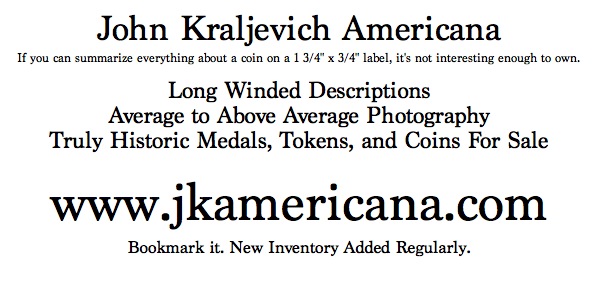
BOOK REVIEW: ENCYCLOPEDIA OF U.S. SILVER DOLLARS, 1794-1804
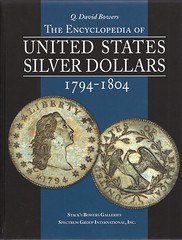 It usually isn’t sensible to review second editions of books, no matter how worthy was the first edition, for the second edition is usually just a tarted-up version of the first. This is not the case with the present volume, which is simultaneously a contracted and an expanded version of Bowers’ and Mark Borkardt’s two-volume 1993 Silver Dollars and Trade Dollars of the United States: A Complete Encyclopedia. It is contracted, because the first edition chronicled silver dollars from 1794 to the early 1990s, while this book focuses only on the first decade of silver dollar production. It is also greatly expanded, because the coverage of that single decade is, in this volume, more comprehensive than anything that has ever been produced on the subject.
It usually isn’t sensible to review second editions of books, no matter how worthy was the first edition, for the second edition is usually just a tarted-up version of the first. This is not the case with the present volume, which is simultaneously a contracted and an expanded version of Bowers’ and Mark Borkardt’s two-volume 1993 Silver Dollars and Trade Dollars of the United States: A Complete Encyclopedia. It is contracted, because the first edition chronicled silver dollars from 1794 to the early 1990s, while this book focuses only on the first decade of silver dollar production. It is also greatly expanded, because the coverage of that single decade is, in this volume, more comprehensive than anything that has ever been produced on the subject.
No surprise there, for the duo who produced the book is truly the first team of numismatic research. Q. David Bowers, who has written more solid numismatic scholarship than anyone else, and R.W. Julian (billed as “Special Contributor”), who has spent more hours in the archives than any other researcher, have combined to provide everything any specialist could ever want to know about the first decade of U.S. silver dollars.
The fun begins with three chapters that provide historical context, share aspects of collecting early dollars, and explain rarity in relation to price. The fourth chapter is catnip for specialists, delving into die characteristics, while the fifth, an easy finding guide, caters to the dedicated collector. Every year from 1794 to 1804 gets a chapter, with 1795 getting two, one for the Flowing Hair, and the other for the Draped Bust, varieties. And that is not to mention the historical market prices chapter, and the appendices on errors and curiosities and early silver dollars in the National Numismatic Collection.
The most remarkable thing about this volume is that it manages to be—at one and the same time—both a practical guide for the collector, and the last word on the subject for scholars. The collector can learn how to distinguish, for example, a Bowers-Borkardt 11 from a Bowers-Borkardt 12, and the scholar will be fascinated to learn that provenance of the King of Siam presentation specimen of the 1804 dollar is clouded by the unreliable memoirs of Anna Leonowens, the Anna of “the King and I.” And everybody, whether collector of specialist, will be amazed to learn that one extraordinary Ohioan amassed a hoard of fifteen circulated 1794 dollars during the 1980s, and depressed to learn that at least two dozen of the surviving 135-150 1794s have been holed or otherwise damaged.
It gives me special satisfaction, however, to report that after years of reviewing Dave Bowers’ books, I have finally found an error, or at least an omission. Turn to page 22, second column, first full paragraph, and you will read the following sentence: “Of the 1,758 coins delivered on that long-ago day, it has been estimated that fewer than still exist, mostly in lower grades.” Clearly “150” was omitted after the word “than.”
One lapse in a book of 343 fact-crammed pages can be forgiven. The only omission that would be unforgivable is if you failed to add this book to your library. Whether you are on the prowl to add early dollars to your collection, or eager to add to your store of numismatic knowledge, The Encyclopedia of United States Silver Dollars, 1794-1804 will be indispensable to your quest.
GERALD "JERRY" BUSS 1934 -2013
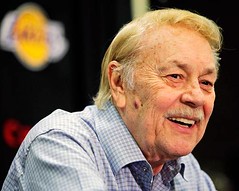 Jerry Buss had been a chemist and a mathematician long before he bought the Los Angeles Lakers in 1979. The self-made millionaire with a head for business and an impresario's heart immersed himself in the NBA with every skill he acquired along the way.
Jerry Buss had been a chemist and a mathematician long before he bought the Los Angeles Lakers in 1979. The self-made millionaire with a head for business and an impresario's heart immersed himself in the NBA with every skill he acquired along the way.
With his personal alchemy and charisma, he blended two generations of marquee basketball stars and big-name coaches into 10 championship teams. His financial wizardry allowed him to pay top dollar to get the best players and keep them together without a huge personal fortune.
Buss built a glittering life for himself and the Lakers, playing a huge role in the NBA's move from a second-tier pro sport into can't-miss Hollywood entertainment while polishing his oddly nicknamed franchise into a glamorous global brand.
To read the complete article, see:
Lakers owner Jerry Buss dies
(msn.foxsports.com/nba/story/los-angeles-lakers-owner-jerry-buss-dies
-cancer-battle-021813)
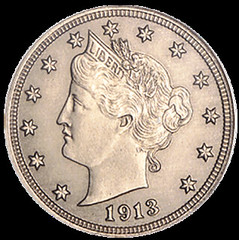 Jerry Buss is best known as the owner of the Los Angeles Lakers basketball team - but to numismatists he is better known as an enthusiastic coin collector.
Jerry Buss is best known as the owner of the Los Angeles Lakers basketball team - but to numismatists he is better known as an enthusiastic coin collector.
A less risky way in which he spends his money is on his coin collection - though Buss describes himself as a 'pure collector' and doesn't buy coins as investments. He started collecting aged 10, selecting coins worth 5c, 10c or 20c.
Attracted by the idea of discovering rare pennies in circulation, he went on to assemble three original sets of Lincoln Cents, Buffalo Nickels and Mercury Dimes, perfectly completed except for the 1909-S VDB.
In the mid-1970s Buss suffered a loss of $150,000-200,000 worth of gold coins in a burglary, which he notes was far more painful than purely financial losses - even when he had lost $5m in the markets. It didn't slow him down though.
There were two famous rarities that Buss wanted to track down: a 1913 Liberty Head Nickel and the 1804 silver dollar.
Suitably it was whilst at a basketball game that Ira Goldberg of Superior Stamp and Coin Gallery offered him the chance to own the Olsen specimen (one of five extant) of the 1913 Liberty Head Nickel, for which he paid $200,000.
The coin had by then been the subject of a Hawaii Five-O plotline, was once owned by King Farouk and most recently sold for $3.7m in 2010. Soon after the purchase, the Goldberg's also helped him to acquire the Idler specimen 1804 silver dollar for a similar figure.
Buss is the only modern coin collector to own an example of each at the same time, and that made his name amongst collectors and is a source of pride. But he still owns his original penny board, and first worn out Red Book and original collections - and that too is a source of great satisfaction.
To read the complete article, see:
From unusual pennies to the coin from Hawaii Five-O: the collections of Jerry Buss
(www.paulfrasercollectibles.com/News/COINS-%26-BANKNOTES/2011
-News-Archive/From-unusual-pennies-to-the-coin-from-Hawaii-Five-O
-the-collections-of-Jerry-Buss/6754.page)
The late Jerry Buss might be remembered by most people as the owner of the Los Angeles Lakers basketball team. To coin collectors, he will be remembered as living the hobby life we all dream of. After all, not many people can own coins like 1913 Liberty Head nickels and then have a name auction to dispose of a collection carefully assembled.
For me, Jerry Buss provided a lesson in being a successful hobby newspaper editor at an early age.
Buss purchased his 1913 Liberty Head nickel for $200,000 in a private treaty sale that was announced in the July 22, 1978, issue of Numismatic News.
At the time, Buss did not want to be revealed as the buyer, so the firm arranging the sale, Superior Stamp and Coin Co. of Beverly Hills, Calif., called the buyer a big star in the entertainment industry.
Readers, of course, would have liked to know who the buyer was. Speculation about who it might be was rampant in the industry.
I was pretty much a bystander to all of this as I had joined the Numismatic News staff just three months earlier.
It was all pretty heady stuff as far as I was concerned. I was curious about the buyer. Who wouldn’t be?
To read the complete article, see: Trying to catch a Buss was daunting (www.numismaticnews.net/article/trying-to-catch-a-buss-was-daunting)
THE BOOK BAZARRE
MORE ON THE RUTH HILL WORLD BANKNOTE COLLECTION
Joe Boling writes:
My understanding is that Ruth Hill's collection went to a bank in St Louis to be used as a museum asset - and the bank eventually got tired of it and disposed of it. The last I heard of it was at least ten years ago.
Eric Schena writes:
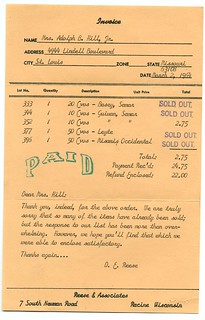 Although I specialize in numismatic items from the Mid-Atlantic, I also have a side interest in world paper money, especially those issues directly related to World War II. Many years ago, I built up a moderate collection of Philippine guerrilla notes, which I still have, including two pieces from Ruth Hill's collection - a pair of KKKK notes from Masbate. Not only that, I had Mrs. Hill's tattered and heavily annotated copy of Neil Shafer's classic work, Philippine Emergency and Guerrilla Currency of World War II. I got the notes and the book from a gentleman in the Mid-West. I may not know where the bulk of her collection of world notes may be, but I do know that at least some of her guerrilla notes were dispersed sometime before 1997, when I got the examples in my collection. I no longer have the book, but I still have a 1964 receipt for some guerrilla notes in my library.
Although I specialize in numismatic items from the Mid-Atlantic, I also have a side interest in world paper money, especially those issues directly related to World War II. Many years ago, I built up a moderate collection of Philippine guerrilla notes, which I still have, including two pieces from Ruth Hill's collection - a pair of KKKK notes from Masbate. Not only that, I had Mrs. Hill's tattered and heavily annotated copy of Neil Shafer's classic work, Philippine Emergency and Guerrilla Currency of World War II. I got the notes and the book from a gentleman in the Mid-West. I may not know where the bulk of her collection of world notes may be, but I do know that at least some of her guerrilla notes were dispersed sometime before 1997, when I got the examples in my collection. I no longer have the book, but I still have a 1964 receipt for some guerrilla notes in my library.
Neil Shafer writes:
Regarding Ruth Hill's collection, which I was familiar with as I visited her a number of times on IBNS and catalog business, she was unalterably poised to bequeath the entire collection to her favorite local bank (I think it was Merchants, not sure) and try though I might, I could not convince her to do otherwise. Title did pass to the bank but I was not in on any of the preparations for moving it. I do know that the collection was not held intact but again I was not in on its partial dispersal.
The last I knew the bank (whatever its name is now as I believe there was some sort of merger) is supposed to be holding what is probably a skeletal type collection of world notes that is most likely unavailable for examination (though I have not tried to see it). I doubt that there is anyone in the bank that knows very much about it. Perhaps 'Dusty' Royer knows more at this point.
Dusty Royer writes:
Neil ask me to contact you regarding Ruth Hill's collection. I had the honor and pleasure of doing the probate valuation for her estate and was then hired by the bank to do a complete inventory. It took myself and Norm Athy about 2 and 1/2 years to complete the cataloging, placing each note in new holders, labeling same, then putting the collection in boxes.
The last time I saw the collection, several years ago, it was intact. If I remember right, there are about 21 of the type boxes used by many dealers. They are sitting on shelves deep in one of the basement vaults of the bank. As far as what's sold, the bank became impatient and decided to sell what they called unimportant parts of the collection. This included all of the notgeld, propaganda, some of the military and the library.
Since I was the cataloger, I was not allowed to bid but did end up with a few items from 3rd parties. I know that when I made my last visit to the bank, the actual collection was still intact. I also know that numerous items had been loaned to several museums prior to her death, but she never kept a record of what and where. I know this because we did see some correspondence referring to loans but without any details.
The collection of books was offered to several numismatic book dealers but their offers were less than an offer from a regular book store here in St. Louis. They bought the books and subsequently, a lot of the books were purchased by the Missouri Numismatic Society. I was given the chance to take whatever books I wanted but since I had the majority of them in my own library, I declined.
The bank has changed hands three times since I was there. I know that the bank doesn't want to do anything with the collection but may at some time in the future. She had no close relatives and the bank is making money on the trust so I don't see it being available anytime in the near future. I would be very surprised if anyone would be allowed access to the collection. While we were working on the collection, several people from the bank were always with us and of course, we could only be there during banking hours which greatly prolonged the process. I hope this helps.
Ron Richardson, Editor, IBNS Journal adds:
As an aside to Bruce Smith's question about the whereabouts of the Ruth Hill world paper money collection, his mention that Ruth Hill "was one of the founding members of the International Bank Note Society" is not actually correct. Mrs Hill was an early paper money collector, a very generous benefactor of IBNS and did great work in support of the Society, but she was not one of the 169 "founding" or Charter members. A full list of Charter members appeared in Vol. 50, No. 4 of the IBNS Journal in December 2011..
To read the earlier E-Sylum article, see: QUERY: WHERE IS THE RUTH HILL WORLD PAPER MONEY COLLECTION? (www.coinbooks.org/esylum_v16n07a16.html)
NOTES FROM E-SYLUM READERS: FEBRUARY 24, 2013
More On Ingle System Scrip
Regarding Eric Schena's new book on Ingle System scrip, Dave Bowers writes:
Somewhere I have an Ingle register—in oak with metal trim—filled with tokens. I will order a copy of the book and will dig out my register! I bought it years ago.
Nick Graver writes:
Please give us a rough date range when these Ingle tokens were used. They're interesting to read about, but a key thing for casual readers like myself is WHEN they were in use.
Author Eric Schena writes:
The precise date the Ingle Brothers started making tokens is not known, though it is generally believed they started in 1908 with the "Copyright" series. They produced tokens under the "Ingle System" name from June 1909 through to June of 1919, when they changed their name to "Insurance Credit System". The Insurance Credit System tokens use a different design, but if you've seen enough of them, you can tell their Ingle origin (the die work and dimensions are very similar, certainly in the earliest ICS pieces).
David Gladfelter writes:
Recently I bought a perfect-bound book published in 1978. When I opened it, the contents fell out with a loud crack. If I don’t find a binder who can glue the innards back, I will soon have a pile of loose pages. (I tried to return the book, but the seller didn’t want it back, he credited the purchase price.) Perfect bindings are OK for only a few years. They don’t age well.
Eric Schena writes:
The publishing is somewhat out of my hands, but since the original run was so limited, if there's another print run, I will certainly suggest that.
To read the earlier E-Sylum article, see: NEW BOOK: THE INGLE SYSTEM SCRIP OF THE MID-ATLANTIC REGION (www.coinbooks.org/esylum_v16n07a03.html)
More on Fake Silver Bars
Dick Hanscom writes:
I see that this week's Coin World (emailed Monday) has an article on counterfeit silver bullion.
Joe Boling is correct. Specific Gravity testing is a good way to test for silver content. This is good for one or two pieces, but when you deal in tens or hundreds at a time, one cannot test each piece.
I saw some counterfeit Pandas last summer. Fortunately, if the weight was correct, they were too thick. If they were the correct thickness, they were too light. I am hoping that the same will be true of the counterfeit Sunshine bars and others.
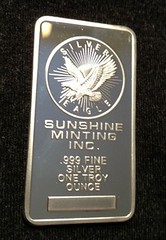 Apropos the fake (i.e., silver-plated base metal) silver bars, eBay is not the only place they are being sold. A member of the dealer-to-dealer network "Coinnet" reported the other day that a man walked into his Illinois coin shop with a boy who looked to be about 10. The man said "My son is looking to sell some of his silver," and on cue the boy handed the dealer ten one ounce National brand silver bars tightly taped together as they were once commonly sold, and as they are still sometimes encountered today.
Apropos the fake (i.e., silver-plated base metal) silver bars, eBay is not the only place they are being sold. A member of the dealer-to-dealer network "Coinnet" reported the other day that a man walked into his Illinois coin shop with a boy who looked to be about 10. The man said "My son is looking to sell some of his silver," and on cue the boy handed the dealer ten one ounce National brand silver bars tightly taped together as they were once commonly sold, and as they are still sometimes encountered today.
Years ago I used to buy such bundles without question, back when silver was $3 an ounce, but some suspicion, or perhaps just good business sense because silver is now $30 an ounce, prompted the dealer to cut the tape and examine the bars. Sure enough, the end two bars were genuine, and the middle eight were plated fakes.
He handed them back to the man and told him that the ones in the middle were fake, and that he would not be buying anything from them. The adult, with chutzpah aplenty, then demanded that the dealer retape the bundle, perhaps, though it was not expressed, so that he could try it again someplace else. The dealer refused.
To read the Coin World article, see: Counterfeit bullion: a plague on the market (www.coinworld.com/Articles/ViewArticle/counterfeit-bullion-a-plague-on-the-market)
To read the earlier E-Sylum article, see: FAKE SILVER BARS OFFERED ON EBAY (www.coinbooks.org/esylum_v16n06a15.html)
Corrections to the February 24, 2013 issue
Ken Spindler caught a typo in Simcha Kuritzky's first name in last week's issue. Thanks. We'll fix this in our web archive. Sorry!
To read the earlier E-Sylum article, see: JOHN HUFFMAN AND GORDON FROST (www.coinbooks.org/esylum_v16n07a22.html)
Tom Sawyer's Weird Uncle Silas
This item from Monday's Writer's Almanac may be of interest to bibliophiles.
And on this day in 1885, Twain published that manuscript, Adventures of Huckleberry Finn. Almost a decade earlier, The Adventures of Tom Sawyer (1876) had been a huge success, and the public was enthusiastically awaiting Twain's newest installment, a sequel to the escapades of Tom and his friend Huck.
It was set to be published in time for Christmas in 1884. But in late November, someone in the publishing house of Charles L. Webster and Company realized something that had escaped the notice of Webster, the writer William Dean Howells, and Twain himself when they looked over the proofs: Somewhere along the way, someone had tinkered with the illustration of Uncle Silas on page 283, making it look like he was indecently exposing himself. Two hundred and fifty copies of the book had already been sent out, as advance reader's copies; but 30,000 more were printed and ready for people who had ordered the book on subscription. The publishing house had to make a new plate, then go through every printed copy, cutting out the offending picture and replacing it with a cleaned-up illustration.
To read the complete article, see: MONDAY Feb. 18, 2013 (writersalmanac.publicradio.org/index.php?date=2013/02/18)
More on the 'First' 1794 Dollar
Joe Boling writes:
If Laura Sperber's "shock and awe" coin was "among" the first struck, and on a polished planchet, how is it that the mint techs didn't manage to smooth out the adjustment marks? And on a plugged planchet? The comparison to the copper strike is very interesting, but this coin does not LOOK like a presentation piece. How many does it take to make a noticeable change in the die state? This seems to me more like the 20th or 30th piece into the bag.
To read the earlier E-Sylum article, see: ARTICLE HIGHLIGHTS 1794 DOLLAR RESEARCH EFFORTS (www.coinbooks.org/esylum_v16n07a12.html)
More on the Distinguished Warfare Medal
Howard A. Daniel III, Master Sergeant, US Army Retired writes:
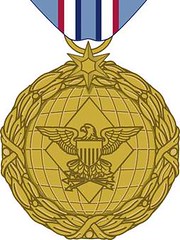 I read the item by Gar Davis in the last edition. I am somewhat shocked that the current administration would create a medal; Distinguished Warfare Medal, for those personnel working from a secure facility far away from combat that is placed above a medal like the Bronze Star with V (Valor) Device! It would be more appropriate to be placed above and next to the Joint Service Commendation Medal.
I read the item by Gar Davis in the last edition. I am somewhat shocked that the current administration would create a medal; Distinguished Warfare Medal, for those personnel working from a secure facility far away from combat that is placed above a medal like the Bronze Star with V (Valor) Device! It would be more appropriate to be placed above and next to the Joint Service Commendation Medal.
Valor is a subject that is not discussed much in the military. We highly respect those men and women who put their lives on the line to save others and/or complete a dangerous mission. To create a medal for a rear echelon person that outranks valor medals is a slap in the face to those brave men and women. The creation of the medal for particular personnel is also something that does not feel right to me. I will email my Congressman about this medal and its ranking.
Gar Travis writes:
 I found this one just floating on the Internet; it was posted on my facebook....
"Unmanned drone pilots now have the potential of being awarded a medal that ranks higher than the Bronze Star. Here is one proposed version of the medal."
I found this one just floating on the Internet; it was posted on my facebook....
"Unmanned drone pilots now have the potential of being awarded a medal that ranks higher than the Bronze Star. Here is one proposed version of the medal."
To read the earlier E-Sylum article, see:
THE DISTINGUISHED WARFARE MEDAL
(www.coinbooks.org/esylum_v16n07a26.html)
More on the Eric Newman Collection Sales
Alan V. Weinberg writes:
Does the Central States pattern offering in April 2013 include Eric's 1792 patterns which would be among Eric's most anticipated coins? Or is the pattern offering "limited"?
I went to the source and asked Stuart Levine, who writes:
The 1792 coins are not included in the Pattern collection. They are an integral part of the Early American Coin Collection. However, I certainly wouldn't characterize the Pattern offering as limited. I'm sure that the Numismatic community will find it fascinating.
Alan also inquired about the rumors of a Newman Large Cent sale. Stuart reiterated the previous statement on this. He writes:
In response to your future sales queries, there are currently no definitive plans to sell the Large Cents, any part of the numismatic library, or any additional collections. Other than the general goal announced by the EPNNES foundation on January 9th, no decisions as to extent or timing of sales have been made. The numismatic community will be kept abreast of any future sales in an exceedingly timely manner.
I would also like to share with you the EPNNES Foundation Statement: "Items being sold are from the extensive collection of Eric P. Newman Numismatic Education Society (a Missouri not-for-profit corporation) and have been assembled over a period of 90 years. The proceeds of the sale of all items will be used exclusively for the benefit of other not-for-profit institutions selected by Eric P. Newman Numismatic Education Society for public purposes and also for supplementing the Society's own museum operations and scholarly research efforts."
To read the earlier E-Sylum article, see: MORE ON THE ERIC NEWMAN COLLECTION SALES (www.coinbooks.org/esylum_v16n07a15.html)
When the Pope Is No Longer The Pope
Jim Duncan of New Zealand writes:
What does the Pope become when he ceases to be the Pope? - ex Benedict. (Not original I'm afraid).
To read the earlier E-Sylum article, see: VATICAN SEDE VACANTE: POPE BENEDICT XVI RESIGNS (www.coinbooks.org/esylum_v16n07a27.html)
Quiz Answer: The Rolling Coin Was ...
Last week I asked if anyone could tll us what coin was shown rolling for an hour on a treadmill in a YouTube video. Joe Boling writes:
The coin on the treadmill was a nickel. If you fast forwarded the clip, at the end the host was handling it - not quite focused enough to read the date.
Ken Berger writes:
If you go towards the end of the video (starting at around 58:37 & a bit later), you can clearly see that it is a Jefferson nickel.
Greg Adams writes:
It is a Jefferson Nickel (58 :42)
To read the earlier E-Sylum article, see: VIDEO: COIN ROLLING ON TREADMILL (www.coinbooks.org/esylum_v16n07a30.html)
ON THE FATE OF NUMISMATIC SCRAPBOOK AND WORLD COINS MAGAZINES
I greatly enjoyed the references to Lee Hewitt's generic coin price guides. I have only one, a specimen of his world coin book imprinted with the name of Chicago dealer Bill Mertes. Prices for vast numbers of coins were five cents each in the early 1950's. It is reported that Hewitt was the discoverer and employer of the late Arlie Slabaugh. Arlie was a type setter, linotypist for Hewitt and it was said that his mind operated at such supersonic speeds that as he set type for a Numismatic Scrapbook article, he would be able to so accurately gauge the amount of space that would be left over at the bottom of a column that he could compose a filler to occupy the space before coming to it...
Many collectors objected to Hewitt's sale of Numismatic Scrapbook to Amos Press (Coin World's parent) in 1968. What was not recognized was that the weekly coin papers had made Scrapbook obsolete, and Lee artfully disguised the run-down nature of the publication from the normally gimlet-eyed J. Oliver Amos who, in effect, bought a flat tire. Nor did Amos have any developed plan for Scrapbook's future other than assigning it to the late Russ Rulau, who had no burning enthusiasm for U.S. numismatics, occupied as he was by his work with the brilliantly successful World Coins magazine.
Scrapbook limped along, slowly losing ground until 1975 when I was appointed to the post of executive editor. During 1975, we made some perceptible progress, especially with introduction of 20th century layout and design, gained new contributors and subscribers until one fine day in January 1976 (right before the Amos Centennial) when Courtney Coffing and I were ordered to the office and informed that both magazines (Scrapbook and World Coins) were being discontinued, NOW. Four more minutes' notice than the 14 staffers who were summarily terminated. I don't know what Hewitt thought of that, though Krause Publications did him honor soon after. The last executive editor was not invited.
Sic transit gloria, as they say.
To read the complete article, see: U.S. COIN BUYING GUIDE HISTORY (www.coinbooks.org/esylum_v16n07a21.html)
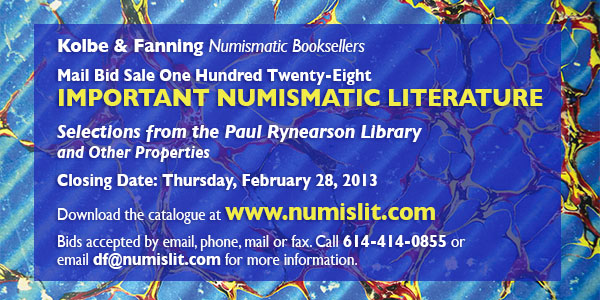
MARK FERGUSON, H.O. GRANBERG, AND THE DEXTER 1804 DOLLAR
 I’ve been bouncing around the country lately and this week I’ve landed in Colorado to conclude my research into the Dexter 1804 Dollar, before embarking on writing a book about this great rarity. The Dexter Dollar is one of the most famous of the 15 known 1804 silver dollars, known as “The King of American Coins.” I’ve been having fun with this coin for many years, as my connection to it is a beautiful work of art commemorating this particular rare coin which was commissioned by its namesake owner, James V. Dexter in 1887 who was a banker from Denver. I was fortunate to acquire this unknown, but now famous, work of art during the late 1980s, right before the Dexter 1804 Dollar became the very first coin to sell at public auction for the million dollar level – $990,000 at “Auction ‘89” in Chicago on July 7, 1989.
I’ve been bouncing around the country lately and this week I’ve landed in Colorado to conclude my research into the Dexter 1804 Dollar, before embarking on writing a book about this great rarity. The Dexter Dollar is one of the most famous of the 15 known 1804 silver dollars, known as “The King of American Coins.” I’ve been having fun with this coin for many years, as my connection to it is a beautiful work of art commemorating this particular rare coin which was commissioned by its namesake owner, James V. Dexter in 1887 who was a banker from Denver. I was fortunate to acquire this unknown, but now famous, work of art during the late 1980s, right before the Dexter 1804 Dollar became the very first coin to sell at public auction for the million dollar level – $990,000 at “Auction ‘89” in Chicago on July 7, 1989.
I also have a connection to the Idler 1804 Dollar, now owned by the American Numismatic Association and displayed in The Money Museum at its headquarters in Colorado Springs. This coin was once owned by H.O. Granberg who was a nationally prominent numismatist from my hometown, Oshkosh, Wisconsin. I purchased his personal residence in 1983 and found a stack of letters written to him during 1908 by William Idler of Philadelphia, from whom he purchased this great rarity.
Granberg was Chairman of the Board of the American Numismatic Association from 1911 to 1914 and President of the ANA during 1915 and 1916. He also owned many great American numismatic rarities, in addition to the Idler 1804 Dollar, which included 1884 and 1885 Trade dollars, one of just ten and five known, respectively; an 1894-S dime, one of just two dozen struck with only about half of those known today; a rare Continental dollar from 1776; one of three known 1853-O no arrows and rays half dollars; a 1794 silver dollar; superior examples of 1796 and 1797 half dollars; an 1854-S gold quarter eagle, one of just a dozen or so that have survived out of 246 pieces coined; as well as numerous important pattern coins and territorial gold coins and other rare U.S. coins.
These rare coins undoubtedly lived in his impressive old safe, pictured here. This safe is my old friend, and almost like a family pet. I used it for more than 25 years and later donated it to the American Numismatic Association in 2010. While at ANA headquarters yesterday for my library research I helped Doug Mudd, museum curator, learn the combination to the safe so the ANA can open it and use its interior for exhibit purposes. It was a fun day – seeing my old friend, the H.O. Granberg safe, for the first time since I sent it on its way from Oshkosh to Colorado Springs three years ago!
To read the complete article, see:
Reuniting with an old “Numismatic” friend in Colorado Springs
(www.coinweek.com/people-in-the-news/reuniting-with-an-old-numismatic
-friend-in-colorado-springs/)
A STETHOSCOPE MEDAL
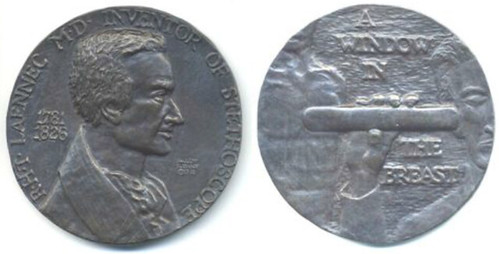
DR. R.H.T. LAENNEC – INVENTOR OF THE STETHOSCOPE, 1982. 77.6mm. Cast. Bronze. Allen Sloane, Sc. Uncirculated. Obverse with a bust to the right and the dates 1781/ 1826 behind the head. Legend: R. H. T. LAENNEC M.D. INVENTOR OF STETHOSCOPE. Reverse is inscribed: A/ WINDOW/ IN/ THE/ BREAST and shows the first model of the stethoscope being held with one end on a bare chest
THE BOOK BAZARRE
QUERY: POST-1793 BANK OF SOUTH CAROLINA NOTES AUCTION RECORD SOUGHT
Ron Ward writes:
I have a question for our readers. Has anyone noticed auction results for the Bank of South Carolina, Dollar Issue, Issued after 1793 notes? These are listed on pages 431 and 432 of Newman as reprints from the original plates, but unpriced. A search of prior Stack's and Heritage auctions archives did not show any sales.
TANENBAUM COUNTERSTAMP COLLECTION LISTING OFFERED
Dear E-Sylum Readers:
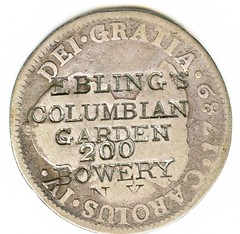 I have just finished cataloging over 350 different counterstamped coins from the estate collection of Stephen L. Tanenbaum. These were collected by Steve over a long period of time, dating back to the 1970s, and include many rare and unique pieces that have been off the market since that time. These primarily consist of imprints by merchants, silversmiths (hallmarks), gun and rifle makers, restaurants, railroads, and other commercial entities on host coins ranging from trimes and half dimes to silver dollars. Many are on large copper cents of the 1793-1857 years and the 19th century silver coins. Each counterstamp is attributed, described, and assigned a net price. As all are one-of-a-kind in the estate, sales are on a first-come, first-served basis.
I have just finished cataloging over 350 different counterstamped coins from the estate collection of Stephen L. Tanenbaum. These were collected by Steve over a long period of time, dating back to the 1970s, and include many rare and unique pieces that have been off the market since that time. These primarily consist of imprints by merchants, silversmiths (hallmarks), gun and rifle makers, restaurants, railroads, and other commercial entities on host coins ranging from trimes and half dimes to silver dollars. Many are on large copper cents of the 1793-1857 years and the 19th century silver coins. Each counterstamp is attributed, described, and assigned a net price. As all are one-of-a-kind in the estate, sales are on a first-come, first-served basis.
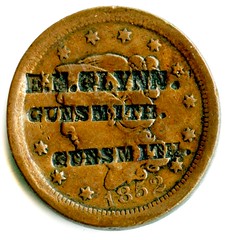 In addition, my listing of Civil War store cards from the Tanenbaum estate has been updated. This includes many rare, extremely rare, and unique pieces, mostly in higher grades.
In addition, my listing of Civil War store cards from the Tanenbaum estate has been updated. This includes many rare, extremely rare, and unique pieces, mostly in higher grades.
I will send a complimentary listing to anyone requesting it. Get set to review a very large offering!
Best wishes,
Q. David (Dave) Bowers
qdbarchive@metrocast.net
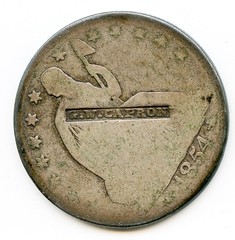

MORE WEB RESOURCES FOR NUMISMATIC RESEARCHERS
I meant to send this last week, so some of these may be repeats, but I wanted to comment on the discussion about websites most used in numismatic research. These are listed in no particular order and are rather a mishmash of webpages I use and webpages that I think are particularly useful (and perhaps less obvious) to others.
-- ANS Databases Library, coins, and archives:
DONUM : Online Library Catalog of ANS Library http://donum.numismatics.org/
MANTIS : Database of Objects in ANS http://numismatics.org/search/
ARCHER : ARCHival Electronic Resource (ANS Archives) http://numismatics.org/archives/
(In the Archives section, there are actually some very useful bios on ANS officers and staff that can be useful for a quick reference : http://numismatics.org/Archives/Biographies
OCRE : Online Coins of the Roman Empire numismatics.org/ocre
-- Digital collections of the Bayerische Staatsbibliothek http://www.bsb-muenchen.de/Digital-Collections.72+M57d0acf4f16.0.html
One of my recent favorites. They seem to have a good number of older numismatic books that are beautifully scanned at high quality and include every single page of the book (even if there is nothing on the page), which makes it an excellent resource for researchers. You can also occasionally download a pdf version for personal research purposes.
-- Perseus Digital Library http://www.perseus.tufts.edu/hopper/
(A great source to key-word search ancient texts and also to search images on works of art, including coins)
-- DLN : Digital Library Numis http://members.ziggo.nl/tverspag/NUMIS/
-- Academia.edu
(Great for finding recently published articles that authors are willing to share. You need a login to download papers)
There are a number of important journals online, but I don't use them as much because I have such direct access to the print versions, but they are summarized in a list here: http://ancientworldonline.blogspot.com/2010/10/open-access-ancient-numismatics.html
Also not on that list is the Journal of the British Numismatic Society (online up through 2007). The link on the homepage doesn't always seem to work, but the index does: http://www.britnumsoc.org/publications/Digital%20BNJ/
There are plenty more that I have not listed, but these are some of my most used.
To read the earlier article, see: WEB RESOURCES FOR NUMISMATIC WRITERS (www.coinbooks.org/esylum_v16n07a17.html)
THE BOOK BAZARRE
FIRST COINVESTORS AND THE SWIATEK-BREEN COMMEMORATIVE BOOK
What stands out in the minds of many readers is the peculiar way in which the book is laid out. Starting from the premise that every commemorative was created by swindlers and frauds, the coins are listed beside the Latin phrase Corpus Delicti, which means “the body of the crime” and refers to the facts necessary to the existence of a crime (as in the death of a victim in a murder case). The groups and individuals behind the pieces are identified as “Suspects” or “Accessories”, and Swiatek and Breen’s description of each coin’s design process comes under the header Modus Operandi. It gives the Encyclopedia a kind of True Crime atmosphere, and makes each story seem like an episode of Dragnet. While all along, the authoritative and collegial manner in which the authors write lulls you into a great sense of trust and camaraderie.
Little did I realize, in all the times I’ve read the book, that some of the fun and games had at the expense of the original purveyors of America’s commemorative coin series was also being had on me as well. It seems that the publishers had more at stake than just selling books.
Maybe I would’ve known better had I been in the game in 1981, when the book came out. It was published in part by First Coinvestors, Inc., a subscription-based, coin-of-the-month dealership (the Columbia House of the not-so-rare coin industry), and, despite winning the 1981 Numismatic Literary Guild Book of the Year Award, the Encyclopedia appears to have been viewed by the company simply as one large “advertorial” to promote their business.
First Coinvestors were one of the biggest distributors of coins to non-numismatists in the country, even hiring both Walter Breen and Don Taxay (Swiatek says he never had much to do with the firm).
For a time their ads could be found in high-powered magazines like Kiplinger’s Personal Finance. One ad circa 1980 offered a free gold Mexican 2 Peso coin (with a modest .0482 ounces of gold) when you subscribed to their $50 a year Rare Coin and Stamp Advisory. The company’s own ad copy described the periodical as something that “reports trends and special limited situations”, and “offers you a chance to buy rare coins and stamps on exceptionally favorable terms”.
The monthly Coinvestors advisory had some 30,000 subscribers in 1980, around the time the Encyclopedia was published. Most of these subscribers, we imagine, were also participating in the firm’s coin-of-the-month program.
And if that’s the case, then how difficult was it to fill orders? The very idea of a rare coin market presupposes that the coins are actually rare. By definition it’s impossible to expect 30,000 rare coins a month to be available. Therefore, despite their own claims, they (and firms like them) weren’t really dealing with rare coins, but readily available coins sold to collectors as “investment instruments”.
There was little to no interest in the Booker T. Washington and Carver Washington half dollars by 1980, despite their historical significance and interesting backstories. The coins were overproduced and undersold. An untold number were melted. Many of them went into circulation, while others gathered dust in clear plastic packaging.
In fact, hoards were being saved. The Guttag Brothers had many; their stash was dispersed only a few years ago. Others, too, stored these unwanted coins by the thousands. For all intents and purposes, once silver was removed from circulation, the Booker T. and Carver Washington halves were treated more like bullion than collectibles.
Yet, in a special section of the Encyclopedia (again, according to Swiatek, inserted without his permission), First Coinvestors President Stanley Apfelbaum named the Booker T. and Carver Washington sets as the first of the “Big Six”, the best commemorative coins of the 1980s.
To read the complete article, see:
Booker T. on the Tarmac: A story about First Coinvestors
(www.coinweek.com/commemoratives/booker-t-on-the-tarmac
-a-story-about-first-coinvestors/)
THE UNITED STATES POSTAL GUIDE AND OFFICIAL ADVERTISER
A PIONEERING NUMISMATIC JOURNAL
Joel J. Orosz If you happened to be a coin collector during Millard Fillmore’s administration, to what national magazine would you have turned to read all of the breaking numismatic news? Not to The Historical Magazine; this estimable publication, which would become the American numismatic journal of record prior to the end of the decade, was not yet, in 1851-1852, a glimmer in its publisher’s eye. No, in those two years, the coin collector’s go-to journal was, improbably enough, The United States Postal Guide and Official Advertiser. A first-class title for an American philatelist, one might think, but likely not worth a cent to a numismatist.
Quite the opposite, however, is true: in its two year run, the Postal Guide offered no philatelic content whatever, but delivered an embarrassment of numismatic riches. It featured regular reports on the U.S. Mint; an occasional letter from the Mint’s Director; interesting fillers about specific coins; the very first nationally-published review of an American coin auction; and two important letters from Professor Daniel Edward Groux about his collections of coins, medals, and numismatic literature. The Postal Guide’s pioneering coinage content has never registered with coin hobbyists. That content was so rich, however, that it deserves to be reintroduced to 21st century numismatic bibliophiles.
However you gain access to the considerable numismatic content within the pages of the Postal Guide, your efforts will be repaid with useful—and sometime whimsical—information. Where else might we learn of the scourge of split gold dollars (June 1852) or read a long and earnest essay upon the monetary value of guano (May 1852)? Without question, although its existence was ephemeral, the Postal Guide preserved much numismatic knowledge worthy of saving.
QUERY: COINAGE MAGAZINE ARTICLES ON CHINA SOUGHT
Though not taken very seriously by the numismatic fraternity, there is an index of this primarily commercial magazine. "Index to COINage Magazine Volume 1 - 16 (1965-1980)" compiled by Paul Anderson in Laguna Hills, CA and published in 1981. The listings are arranged by category and then by year. No author or page numbers are given.
At the end is a long Miscellaneous section. This is followed by a note: "Since I don't own a set of Coinage Magazines, any help you can give me in getting the items in the Miscellaneous section put into the proper categories would be greatly appreciated."
There are several items in my area of study -- China -- but I too never subscribed to this magazine. I would appreciate it if anyone can provide information on a few articles for my own bibliography. I need the exact title, author, page numbers, and a brief description of the contents. A scan or Xerox of the article would be great.
1) Chinese Gold December 1965 (or maybe 1966)
2) Chinese Gold June 1971
3) The China Collection October 1979
4) A Numismatist in China June 1978
5) A Numismatist in Viet Nam August 1972
Over the years some important articles have appeared in Coinage. The magazine has also published some spectacular photos by Larry Stevens. Two of the important articles on China published here include:
A) "A Yank in the China Mint" December 1971. No author is given, but the subject is the collection of Clifford Hewitt (former US mint technician, who later helped set up the Manila Mint and the Shanghai Mint). This collection was then owned and displayed by Edward P. Janzen. This collection later went to the ANS in New York.
B) "Mint in Exile" by Oscar Dodson (August 1966) about the Taiwan Mint
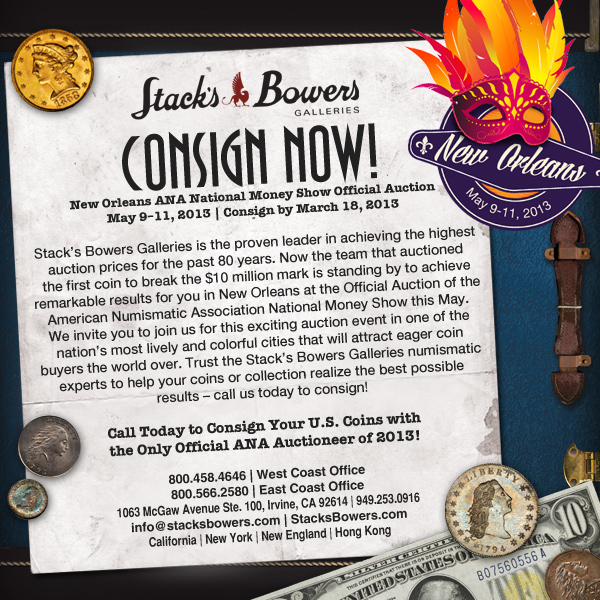
HOW MANY COUNTRIES ARE THERE IN THE WORLD?
Yes, I fully agree with Kavan Ratnatunga and wonder what the Guinness uses for definition of a "Country?"
The total number of countries (independent nations) in the world are 196 comprising 193 member countries of the UN, 2 recognized non-member countries of the UN (Vatican and Palestine) and one independent non-member country (Taiwan).
I read somewhere that in 2007, Sanjay Relan of Hong Kong entered the Guinness Book of World Records for collecting bank notes representing 221 countries. How can they mention 221 when the total number of countries in 2007 were only 195 (excluding Palestine which was recognized by the UN as a non-member country in 2012)?
I also read another website carrying an article in the Thiruvananthapuram edition of The Hindu dated Nov 16, 2006 that Justin Gilbert Lopez was managed to set a new Guinness World Record for the largest collection of coins with a total of 255 coins representing 255 countries. He broke the record of Sanjay Relan from Hong Kong who had collected a total of 235 coins from 235 countries."
How these misleading information is being published about the number of countries of the world - 221, 235 & 255 - when the actual number of countries was only 195 then.
To read the earlier E-Sylum article, see: NEW COIN KING CROWNED BY GUINNESS BOOK OF WORLD RECORD (www.coinbooks.org/esylum_v09n47a27.html)
A CHART OF THE VALUE OF THE U.S. CENT

Did you ever read an article that was so convincing you wonder why you hadn't come to its stated viewpoint all along? I encountered such an article this week.
It was written by Ed Dolan, a writer in economics with a PhD from Yale. He tackled the problem of the U.S. cent from an economic viewpoint. His comments made perfect sense but what blew me away was the chart that illustrated his article.
His editor pointed out in the headline that this chart would help you decide whether we should "Get Along Without the Penny.." Granted he called it a penny instead of a cent throughout the article. But the gist of it was that the economic value of the cent is equivalent to what a quarter was in 1913, or a dime in 1947, or a nickel in 1973.
The economic value of the cent declines as our economy rises. And that is for the good in a productive vibrant society.
But consider, the cent is worth less today than the mill was in the depression years of the 1930s when the government refused to strike such a coin -- and states collecting sales tax had to issue their own mills -- tokens made of zinc, cardboard and plastic -- to collect that sales tax. (Later replaced by a bracket system to pay in full pennies.)
I could not find a better reason for the abolishment of the cent, irrespective of the fact it now costs 2.1 cents to strike each cent coin.
Check out this article and note well that chart:
Can we Get Along Without the Penny? This Chart May Help you Decide
(www.economonitor.com/dolanecon/2013/02/19/can-we-get-along
-without-the-penny-this-chart-may-help-you-decide/)
THE BOOK BAZARRE
MAN OFFERS CHOICE OF $5 BILL OR SILVER DOLLAR FOR FREE
 Mark Dice, an author and critic of the current state of affairs, likes to depict what he calls the ignorance of Americans. His latest video shows him giving local residents the option of receiving a free $5 Federal Reserve Note or a free Silver Dollar.
Mark Dice, an author and critic of the current state of affairs, likes to depict what he calls the ignorance of Americans. His latest video shows him giving local residents the option of receiving a free $5 Federal Reserve Note or a free Silver Dollar.
The YouTube video has Mark Dice asking multiple people what they would prefer. Most of the Oceanside, California residents chose the $5 bill because they believed it was worth more than the Silver Dollar, which is trading around the $30 mark. Other reasons included that the banknote was lighter than the Silver Dollar.
At the end of the video, someone finally accepted Dice’s offer. The young lady took the $5 bill instead of the Silver bullion coin, which actually relieved Dice because then he would have been out a Silver coin.
Dice has published these types of videos over the years. Earlier this month, he offered people a free one ounce Canadian Maple Leaf gold coin if they could guess the price within a 25 percent to 50 percent range. Similar to this video, the people were unaware of the real value of gold.
To read the complete article, see: California man offers residents $5 bill or Silver Dollar for free (www.digitaljournal.com/article/343885)
